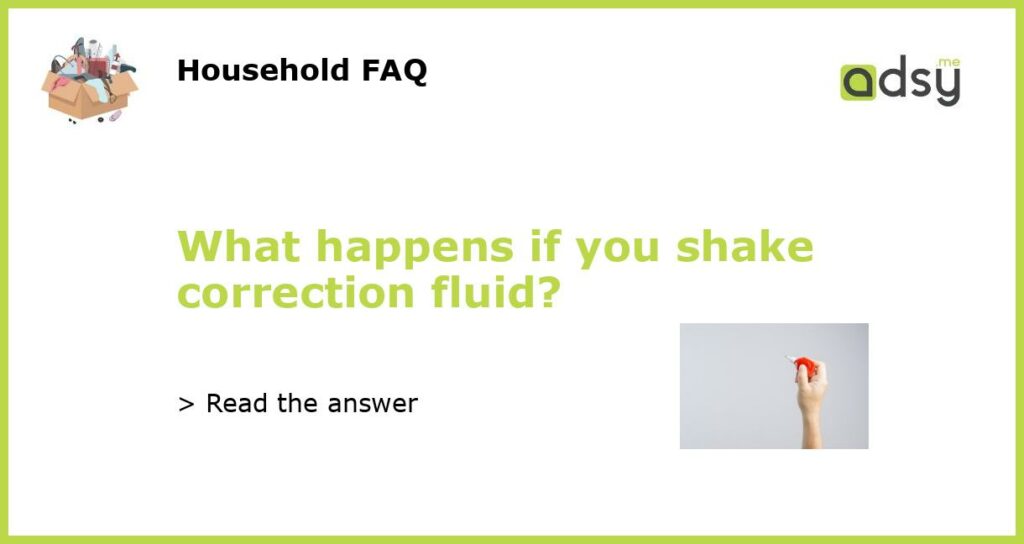The Science Behind Correction Fluid
Correction fluid, also known as white-out, is a popular tool used to cover up mistakes made when writing or typing. It has been around for decades and is used by people all over the world. But what happens when you shake correction fluid?
The Chemical Composition of Correction Fluid
Correction fluid is made up of several components, including solvents, pigments, and resins. When you shake correction fluid, the pigments become suspended in the solution, creating a homogeneous mixture. This can make the correction fluid appear milky and cloudy.
The Importance of Not Shaking Correction Fluid
While it may be tempting to shake correction fluid to get a better consistency, it’s important to resist that urge. Shaking the correction fluid can cause air bubbles to form in the mixture, which can create an uneven application. Additionally, shaking can cause the pigments to clump together, making the correction fluid less effective.
How to Properly Use Correction Fluid
The best way to use correction fluid is to apply it in thin layers, allowing each layer to dry before adding another. This will ensure that the correction fluid covers the mistake completely and evenly. If the correction fluid is too thick or clumpy, it may be necessary to purchase a new bottle.
The Bottom Line: Don’t Shake Correction Fluid
In conclusion, shaking correction fluid can have negative consequences on its effectiveness. To get the best results, use correction fluid properly and avoid shaking it at all costs.






